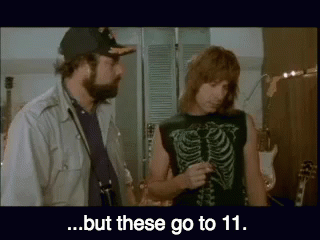Has anyone else observed that “big” wines (huge fruit, ripeness, extraction, etc.) seem to get a significant boost in critical and drinker scores as compared to lighter-weight and more elegant wines? I always sort of suspected this was true for critics, but where I really have observed it is on Cellartracker. If you look at the scores given for wines and compare them to the writeups, it is very rare for lighter-weight wines to get scores of 95+ no matter how much people rave about them, and “big” wines can get huge scores even if the writeup seems sort of indifferent.
You really see this in scores for Burgundy vs other regions. If you were to go by CT you would think California Syrahs are better wines that Cotes de Nuits Burgundy, even though no one really believes this. Part of that is the selection effect on who drinks what, but when you look reviews it’s hard to escape the feeling that there is some tendency for people to just award the size of a wine in how they assess it.
A few examples of what I’m talking about –
reviews for 2013 Shafer Relentless (CT average 94 points) –
95 points – “Big tannin when opened up. Smoothed out with air and food. Big pepper, meaty but not quite on par with Cayuse territory. Dark blue fruit territory. Like it, but again fruit profile wise Paso is just more my jam than Napa.”
93 points --“Purple and blue in the glass. Tasted over two days. Bouquet of ripe muddled blueberry, effusive purple fruits, magic marker, (oak imparted) thick coconut oil, hints of pepper, and strong, almost ether-like, alcohol. The wine tastes exactly like it smells, each element coming forward separately, other than the omnipresent alcohol, in tsunami-like waves. The 15.8 reported abv was especially obtrusive on the second day. A higher proportion of Petite Sirah would have made the wine more interesting. Inky, fruit drenched oak aficionados, who have no qualms with exhaling fire after each taste, might swoon over this now. Otherwise, it needs time to settle, evolve, and hopefully, develop into the sum of its component parts. Recommend holding for 15 to 20 years; the alcohol alone will preserve it for that long.”
These people are pretty meh about the wine but they are giving it 93-95 points!
Now look at some notes for the 2010 Bertheau Charmes (CT average 91.7 points):
92 points – “This was really good! Deep dark fruits, cherries, pepper, cardamom and other spice. Very smooth and lovely to drink now. It will probably shut down soon.”
92 points – “Gorgeous floral aromatics married with a light, smooth mouthfeel. On day 2, the nose gained greater depth, while the palate picked up weight without losing its elegance. The wine’s specific flavors became almost an afterthought as the experience was dominated by the fragrant nose and the incredible, silky mouthfeel. Superb.”
These people LOVE this wine but it’s not sniffing 95 points.
Obviously I’m cherry-picking these examples but I see this pattern over and over again.
I don’t mean this just to be a comment on CT which as we all know has a ton of idiosyncracies and taster prejudices. What I’m wondering is if it speaks to something more generally in how people assess wine, just being impressed by WOW IT’S BIG and paying less attention to other things. It’s harder to trace this out for critics (although obviously Parker had a severe case of it), because critics don’t tend to comment across regions as much, but I think it is very much operative for professional critics as well.
Interestingly, it is not so operative for market prices. There are plenty of gorgeous lighter-bodied wines without outstanding critical scores that go for much higher prices (much higher market demand) than bigger wines with bigger scores. Ironically, sometimes the critical scores follow when the wine goes through the roof in price.
